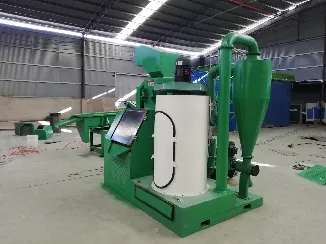

Jul . 31, 2024 23:46 Back to list
Understanding Aluminum Eddy Current Properties, Applications, and Innovations
Eddy currents are loops of electric current that are induced within conductors by a changing magnetic field in the conductor. This phenomenon is integral to many electrical engineering applications, particularly in the realm of non-destructive testing, inductive heating, and electromagnetic braking. When aluminum, a widely used non-ferrous metal, is subjected to a changing magnetic field, it generates eddy currents that have significant implications for both industrial processes and technological innovations.
Aluminum possesses unique electrical and thermal conductivity properties, making it a prime candidate for studying eddy current behavior. Its lower electrical resistance compared to other metals results in stronger eddy current generation when subjected to magnetic fields. This characteristic has numerous applications in various fields from recycling and metal sorting to advanced manufacturing techniques.
Understanding Aluminum Eddy Current Properties, Applications, and Innovations
Another significant application of eddy currents in aluminum is in the field of induction heating. This heating method leverages the principle of eddy currents to heat metallic materials quickly and uniformly. When an alternating current passes through a coil, it generates a changing magnetic field, which induces eddy currents in the aluminum workpiece. This results in rapid heating, making the process ideal for metalworking applications such as forging, brazing, and annealing. Moreover, because induction heating is localized and efficient, it reduces energy consumption and enhances productivity, making it an attractive option for modern manufacturing industries.

Eddy current braking systems also utilize the principles of aluminum eddy currents. In electric trains and amusement park rides, aluminum conductors generate eddy currents when they move through magnetic fields. This interaction produces opposing magnetic fields, creating a braking force that slows down the movement. The advantages of eddy current brakes include minimal wear and tear, as there are no physical contact surfaces, and the ability to provide smooth, controlled stops.
Recent advancements in technology have opened up new avenues for using aluminum eddy currents. Researchers are exploring the integration of eddy current principles in the development of energy harvesting devices. By using aluminum in applications that capture ambient energy through changes in magnetic fields, it may be possible to power small electronic devices and sensors while reducing dependence on batteries.
Moreover, the recycling industry has also benefited from eddy current technology. Aluminum’s non-ferrous nature allows for the separation of aluminum from other materials during recycling processes. Eddy current separators leverage this property by using high-frequency magnetic fields to induce eddy currents in non-ferrous metals. The resulting repelling forces effectively propel aluminum away from other materials, ensuring efficient recovery and boosting the overall effectiveness of recycling operations.
In conclusion, aluminum eddy currents play a pivotal role in various applications across multiple industries. Their unique properties enable significant advancements in non-destructive testing, induction heating, and braking systems while paving the way for innovative energy solutions. As technology evolves, the potential uses of aluminum eddy currents will likely expand, contributing to more efficient industrial processes and sustainable practices. Continued research and development in this area promise exciting prospects for the future of aluminum applications.
Latest news
Troubleshooting Common Eddy Separator Problems
NewsJul.04,2025
The Role of Metal Recycling Plants in Circular Economy
NewsJul.04,2025
The Impact of Recycling Line Pickers on Waste Management Costs
NewsJul.04,2025
Safety Features Every Metal Shredder Should Have
NewsJul.04,2025
How Industrial Shredders Improve Waste Management Systems
NewsJul.04,2025
How Cable Granulators Contribute to Sustainable Recycling
NewsJul.04,2025